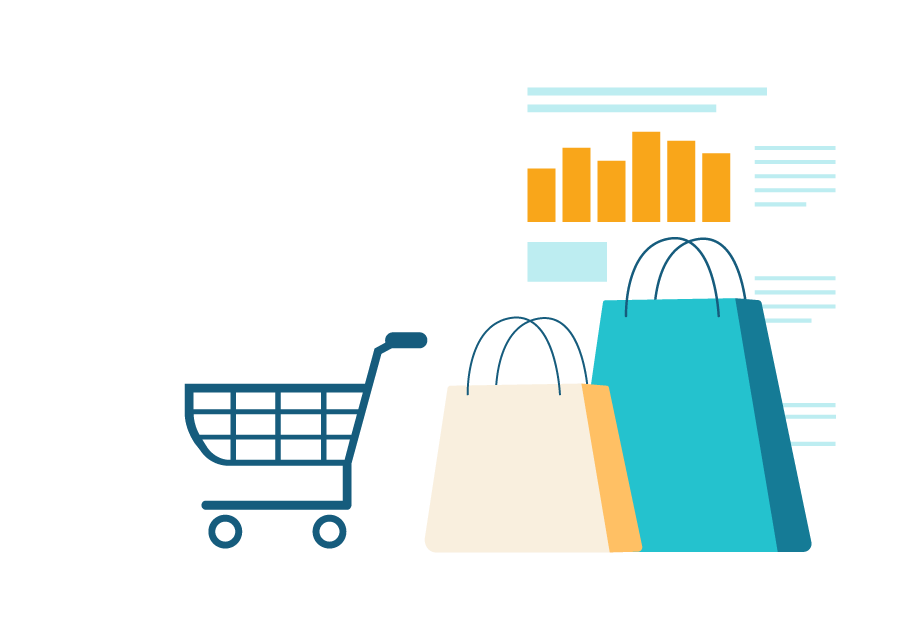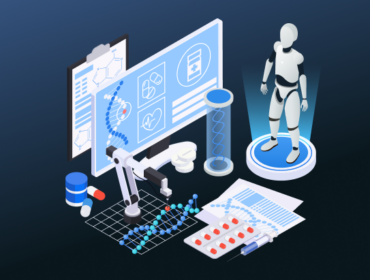It may seem that every nosedive prefixed with “Great” causes more hearts to flutter than any other word. The Great Depression and the Great Recession are two cases in point. But “Great” is there for a reason, reflecting the repercussions for people and businesses — and so is it with 2022’s Great Retail Reset.
The retail industry reset is afoot in response to the revelations exposed by the pandemic. Most retailers missed the mark when bringing customers back into stores. Even those who excelled at getting shoppers back to their locations lost too many of them as customers were confronted with empty shelves.
The reset is necessary — businesses must give up on what has turned out to be ineffective practices, in part because their practices are not customer-centric. One way to reset is to adopt time-tested yet underrated solutions — predictive analytics in retail — to evolve the customer experience.
Why predictive analytics makes retail data more valuable
Predictive analytics is a technology used to — you guessed it — predict. But if you’re now thinking you can take advantage of predictive analytics to forecast the next Bitcoin bull run, we’ll shatter that dangerous illusion right now.
Predictive analytics isn’t about giving you a 100% accurate answer to something that has yet to occur. It’s a complex technology that produces actionable forecasts based on what has already happened or is happening right now. To make these forecasts, it draws on data inputs and machine learning (ML) models. The basic procedure works like this:

- You gather data.
- You set up a machine learning (ML) model to distinguish data patterns in historical data.
- You give the ML algorithm new data, and it makes predictions based on the patterns it found in the historical data.
When it comes to using predictive analytics in retail, the ML model is often designed as a neural network — an adaptive, self-improving deep learning method of data analysis. The data can range from procurement volume and cost to what’s trending and which products customers purchased most in your stores.
As a retailer, you’re apt to already use this kind of data every day, and so far, so good. But you underuse it by analyzing it in hindsight to figure out what you could have done better in the past. Predictive analytics offers a way to act on your data now to reset your business for a better outcome in the future.
Benefits of using predictive analytics in retail, storewide
Your reward cards, sign-ups, POS systems, and inventory trackers all provide abundant data sources for predictive analytics. You can extract detailed data from them, but take care that collecting certain data doesn’t violate privacy laws or ethical guidelines (so yes, you may need to first ask your customers for permission to use their personal data).
If nothing bars you from using the data, there’s no better way to spend a dollar than on adopting predictive analytics in retail. Read on to learn why.
Reduced stockouts
Remember the last holiday season? The retail frenzy when 60% of shoppers encountered an “Out of Stock” or “On Its Way” sign? Well, if you’d used predictive analytics to prepare for the holiday season, your customers would have been much happier.
Stockouts are a pet peeve for every retailer. But predictive analytics gives you the power to minimize the stockout rate in your stores. By analyzing last-year sales for the same time period, current inventory levels, shipments, deliveries, and other metrics, you can know with more certainty when your procurement team needs to shift into a higher gear to keep your shelves brimming with products.
More sales
In 2022, customers again have money burning a hole in their pockets. There’s a bullish outlook for an 8% increase in retail sales this year. But how can you ensure that reanimated customer spending will result in a profit windfall for your business?
Predictive analytics gives you multiple options to increase sales. With extensive empirical data baked into an ML model, you can act on the shopping patterns and behaviors of those who visit your stores. Behavior predictions can help you target specific cohorts of shoppers, create sought-after bundle deals, cross-sell products, and retain big spenders on the verge of leaving forever.
No missed opportunities
It’s good to know what products you should have in abundance when shoppers’ interest in specific goods or brands is about to grow.
With predictive analytics, you can forecast customers’ needs months in advance and update your inventory or pricing. Smart predictions present opportunities to tap into a greater share of the industry with $27.3 trillion in sales worldwide by increasing your stock of trending products or adding new ones to your shelves.
Excellent customer experience
If you don’t provide the best customer experience (CX), the days of your retail business are numbered. Today’s shoppers want to put minimal effort into making purchases. For example, in the US and Canada, 65% of consumers think businesses deliver a subpar CX, indicating that retailers need to up their game to provide exceptional customer experiences.
Adopting predictive analytics in retail locations can set your stores apart from competitors whose CX is lacking. Based on how customers shop, predictive analytics can help you create personalized offerings, which increases shopper satisfaction.
Well-timed scaling
Whether you’re thinking about opening a second or thirty-second location of your business, thorough planning goes a long way. Planning with predictive analytics goes even further.
You can feed your ML model data that’s more than store-deep. For instance, you can use geography-specific data, like retail sales by region, most in-demand items in an area, and rent for commercial space within a given territory to plan your expansion strategy. With that, ML can forecast whether opening a new location in a certain area is a solid move or bodes ill for your business.
Predictive analytics in action
Predictive models can serve many functions in retail. Which you leverage will depend on several things, including data availability and integrations. But the most important factor is the purpose of forecasts.
The specific use cases for predictive analytics in retail determine what kind of data you’ll need to train your ML models. Let’s explore some red-hot use cases for retailers before you can proceed with predictive functionality for your business software.

Stock management systems
While a typical stock management system red-flags products, meaning that it warns about products that are sold out or nearly sold out, a prediction-based system looks ahead. To make forecasts for efficient inventory management, it uses supply chain data, daily turnover numbers, and trend analytics. Here’s a closer look at a stock management system with a forecasting capability.
Behavioral analytics tools
Nothing is more temporary than a shopper swearing by your product today. Behavioral analytics tools can analyze reviews and social media posts to forecast shopper interests and needs that may affect your retail sales in the future. Advanced ML algorithms look at spending habits, demographics, trends, and shifting attitudes on an omnichannel basis.
Demand planning solutions
These solutions closely correlate with stock management systems but may not take the inventory level into account. Instead, they zero in on preselected drivers of retail demand, seasonal fluctuations, in-store deals, and discounts. The forecasts then show how much you can expect in sales at each location.
Price optimization solutions
Are your decisions only a price tag away from causing sticker shock or improving your bottom line? It’s hard to tell without data-backed predictions. These can factor in your current pricing, your competitors’ pricing, GDP forecasts, and shoppers’ motivation to predict the effect of changes in the prices of your products.
Geo analytics tools
Predictive modeling is at the core of tools used to optimize delivery routes or identify the best locations for retail opportunities. It can predict everything from delayed delivery times to dwindling consumer spending in a selected region. You can use these forecasts when deciding how to get through shipping disruptions or whether to open a new location or close an existing store.
E-commerce tools
Are you all in on e-commerce? Predictive analytics is as helpful for online sellers as for those who run physical stores. Amazon exemplifies the income-generating use of predictions and uplift modeling by creating shopping recommendations. You can follow suit to identify cross-selling and upselling opportunities as you assess the likelihood of purchase with the ML model.

What to look for when adopting predictive analytics in retail
Not to take the wind out of your sails if you’re ready to adopt predictive analytics for your business, but don’t expect smooth sailing when getting started. Why? Because the adoption process can be stormy with huge waves lapping against your boat.
Clean data
For starters, you need to train an ML model with data that is:
- Neatly extracted and abundant
- Relevant to specific use cases
- Accurate and clustered
Issues may arise with each criterion. While you may have a lot of data across your POS systems, CRM software, and inventory management solutions, bringing it all to a centralized space in a shareable format is impossible without the right ETL (extract, transform, and load) process. This should be followed by identifying which data types apply to the intended use of predictive analytics and refining them to eliminate duplicate entries and ambiguous data.
Expertise
Another roadblock is acquiring the necessary expertise. You should hire the best talent you can to train an ML model for your retail business. Ideally, you want to look for specialists with the following qualities:
- Knowledgeable about big data and data analytics in retail
- Fluent in R and/or Python programming languages
- Trained to apply ML modeling and deep learning technologies
Actionable data visualization
Last but not least, you need something you can act on after your ML model generates predictions. A best practice is to create dashboards to visualize forecasts for each use case that your decision-makers can explore with ease. For example, you might have one dashboard for employees who make decisions about your supply chain and another for employees concerned with sales trends. This way, decision-makers get automated recommendations based on prescriptive analytics and then create an efficient action plan.
For visualizations and recommendations based on predictive analytics, your team can deploy either of two kinds of ML models:
- Standalone web service
- Part of your existing inventory management, ERP, or other systems
The ideal deployment option for predictive analytics in retail is the one you find to be flexible and convenient. If you’re of two minds, an expert opinion can help.
A quick recap and next steps
The Great Retail Reset imposes new customer-oriented trends for retailers, small and large. Flouting them could sound a death knell for your business amid the rising expectations of shoppers for an improved customer experience and in-store product availability.
Predictive analytics allows you to reset your retail operations without helter-skelter processes. With data-based forecasts, you can deliver a better CX and maximize your profits by giving shoppers what they want, where and when they want it.
However, leveraging predictive analytics in retail or any other industry requires the diligence of the right team. Want to save yourself at least the headache of searching for ML experts? Unicsoft is home to an extensive talent pool. Big data and ML development services are our strengths, and we know how to tame your data, so it serves the desired function in predictive analytics.
Here’s your first actionable prediction: Your predictive analytics project will take shape soon after you connect with Unicsoft.






![How to Use Predictive Analytics in Retail to Survive the Great Retail Reset What’s the EU Artificial Intelligence Act and How to Comply? [Webinar]](https://unicsoft.com/wp-content/uploads/2024/03/Cover_1140_v1.1-370x280.png)

